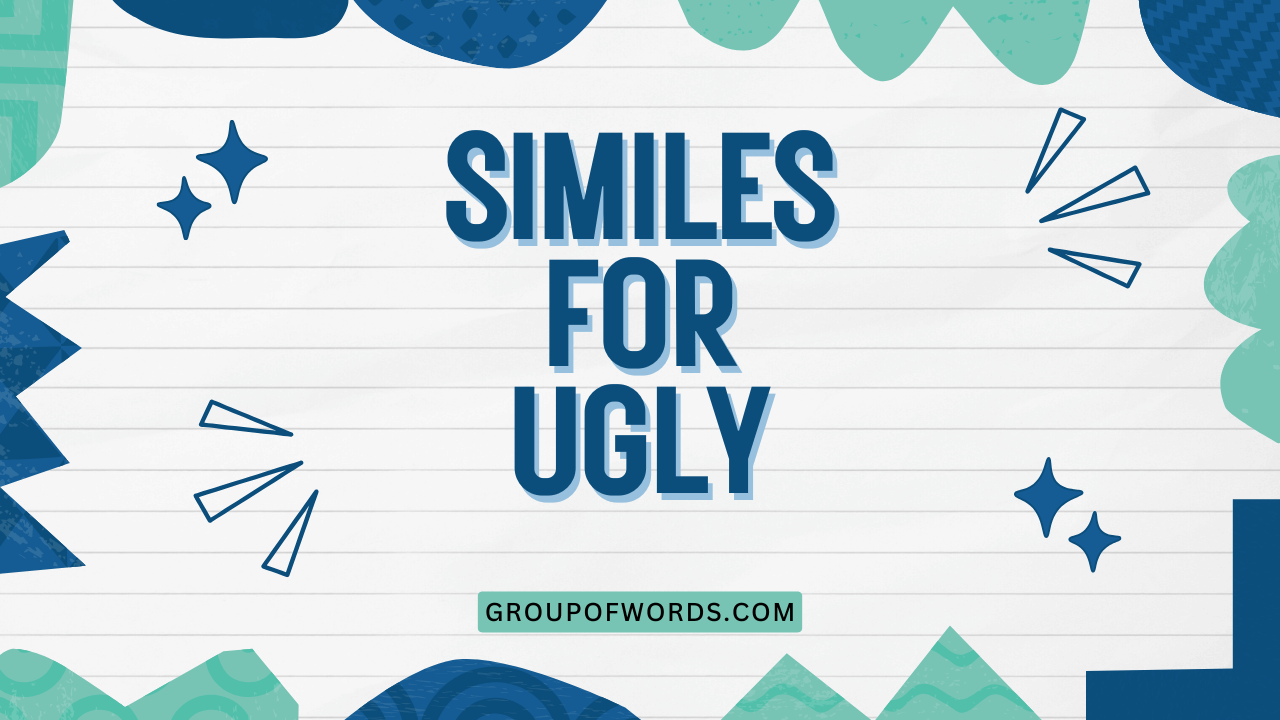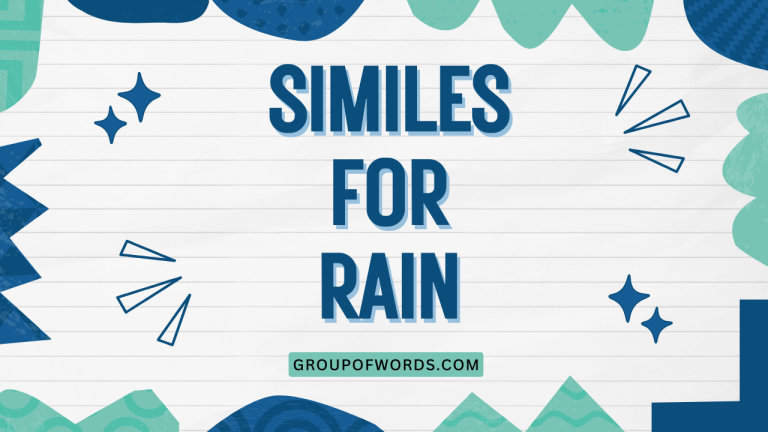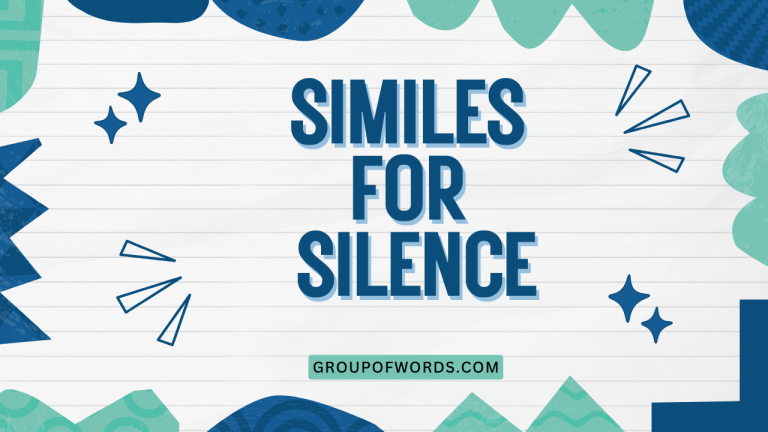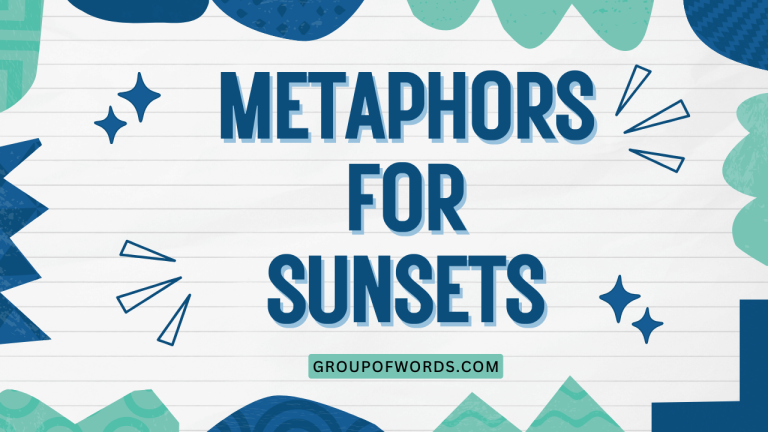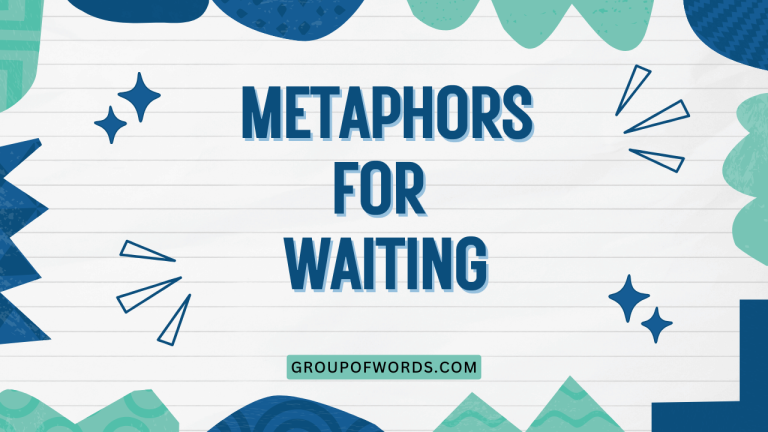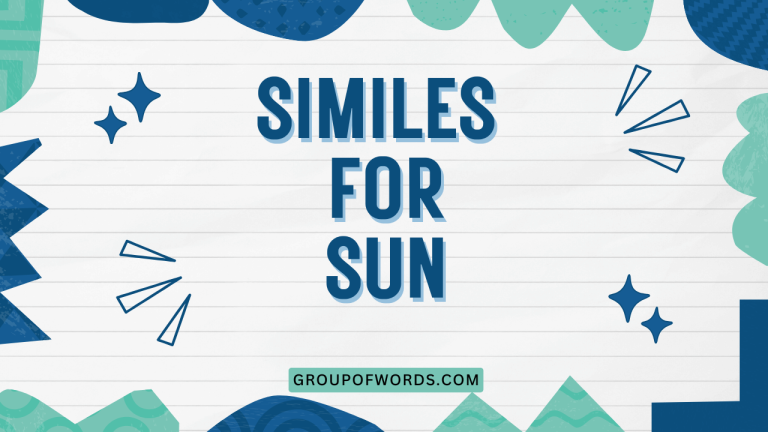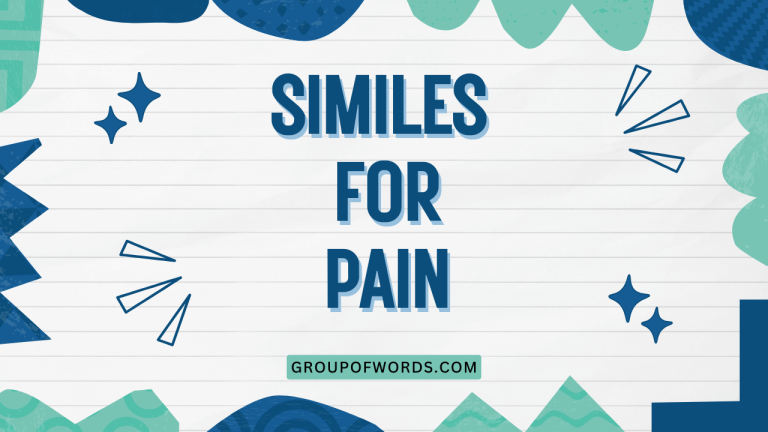Similes for Ugly: Enhancing Descriptive Language
Understanding and using similes effectively is crucial for enriching your descriptive writing. Similes allow you to draw comparisons between dissimilar things, making your language more vivid and engaging.
When describing something as “ugly,” a range of similes can add depth and nuance to your expression, moving beyond the simple adjective. This article explores a variety of similes for “ugly,” providing examples, usage rules, and practice exercises to help you master this aspect of descriptive language.
Whether you’re a student, writer, or language enthusiast, this guide will enhance your ability to create impactful imagery through similes.
Table of Contents
- Definition of Similes
- Structural Breakdown of Similes
- Types of Similes for “Ugly”
- Examples of Similes for “Ugly”
- Usage Rules for Similes
- Common Mistakes with Similes
- Practice Exercises
- Advanced Topics in Similes
- Frequently Asked Questions
- Conclusion
Definition of Similes
A simile is a figure of speech that compares two unlike things using the words “like” or “as.” Its primary function is to create a vivid image or convey a specific quality by associating it with something more familiar or evocative. Similes are essential tools in descriptive writing and poetry, enhancing the reader’s understanding and engagement with the text.
Unlike metaphors, which directly state that one thing *is* another, similes make an explicit comparison. This distinction is crucial for understanding their function and appropriate usage.
Similes add color and depth to language, making descriptions more memorable and impactful. They help the reader visualize and connect with the subject matter on a deeper level.
Structural Breakdown of Similes
The basic structure of a simile consists of three key components:
- The Subject: The thing being described (e.g., the building).
- The Connecting Word: “Like” or “as.”
- The Object of Comparison: The thing the subject is being compared to (e.g., a dilapidated shack).
This structure can be represented as: Subject + Connecting Word + Object of Comparison. For example, “The building was as ugly as a dilapidated shack.” Understanding this structure is fundamental to crafting effective and grammatically correct similes.
The clearer the comparison, the more impactful the simile.
Variations in sentence structure can also be used to create different effects. For instance, the object of comparison can come before the subject for emphasis, such as “As repulsive as a festering wound, the statue stood in the town square.” The key is to maintain clarity and ensure the comparison is easily understood.
Types of Similes for “Ugly”
Similes used to describe something as “ugly” can be categorized based on the type of imagery they evoke. These categories include:
Visually Unappealing Similes
These similes focus on aspects that are unpleasant to look at, such as decay, distortion, or general unattractiveness.
Emotionally Repulsive Similes
These similes highlight the negative feelings that the “ugly” thing evokes, such as disgust, revulsion, or discomfort.
Similes Based on Unpleasant Textures or Sounds
While primarily focused on visual ugliness, these similes can incorporate other sensory details to enhance the description, making it more visceral and impactful.
Similes Drawing from Nature
Nature, while often beautiful, also contains elements that can be considered ugly. These similes draw comparisons to these less appealing aspects of the natural world.
Similes Drawing from Human Creations
Human creations, such as poorly designed buildings or decaying objects, can also serve as effective comparisons for ugliness.
Examples of Similes for “Ugly”
The following tables provide a wide range of similes for “ugly,” categorized by the type of imagery they evoke. Each simile is designed to create a specific effect and enhance the reader’s understanding.
Table 1: Visually Unappealing Similes
This table provides similes that emphasize visual aspects of ugliness, focusing on appearance and aesthetics. These similes aim to create a strong visual image of unattractiveness.
| Simile | Explanation |
|---|---|
| As ugly as a mud fence. | Describes something very plain and unattractive. |
| As ugly as a gargoyle. | Compares the subject to a grotesque architectural feature. |
| As ugly as sin. | A common expression suggesting extreme unattractiveness. |
| As ugly as a burnt offering. | Evokes an image of something destroyed and unappealing. |
| As ugly as a smashed pumpkin. | Suggests a deformed and unpleasant appearance. |
| As ugly as a wart on a nose. | Highlights a small but noticeable and unattractive feature. |
| As ugly as a troll under a bridge. | Evokes the image of a mythical creature known for its unpleasant appearance. |
| As ugly as a broken mirror. | Suggests imperfection and a distorted reflection. |
| As ugly as a decaying corpse. | A strong and unpleasant comparison to something decomposing. |
| As ugly as a mangled scarecrow. | Suggests a damaged and unsettling figure. |
| As ugly as a rusted bucket. | Highlights the unattractiveness of something old and decaying. |
| As ugly as a cracked painting. | Evokes the image of something once beautiful that is now damaged. |
| As ugly as a faded tattoo. | Suggests something that has lost its appeal over time. |
| As ugly as a stained mattress. | Highlights the unpleasantness of something dirty and unhygienic. |
| As ugly as a torn curtain. | Suggests something incomplete and unattractive. |
| As ugly as a chipped teacup. | Highlights a small imperfection that detracts from the overall appearance. |
| As ugly as a dented car. | Evokes the image of something damaged and unsightly. |
| As ugly as a peeling billboard. | Suggests something that is decaying and unattractive. |
| As ugly as a cobweb-covered chandelier. | Highlights the neglect and decay of something once elegant. |
| As ugly as a wilted flower. | Evokes the image of something that has lost its beauty and vitality. |
| As ugly as a blotched canvas. | Suggests something that is marred and unattractive due to imperfections. |
| As ugly as a tarnished trophy. | Highlights the loss of luster and appeal over time. |
| As ugly as a fraying rope. | Suggests something that is worn and unattractive due to wear and tear. |
| As ugly as a mildewed shower curtain. | Evokes the unpleasantness of something dirty and unhygienic. |
| As ugly as a scuffed shoe. | Highlights the damage and wear that detract from the appearance. |
Table 2: Emotionally Repulsive Similes
This table focuses on similes that evoke negative emotions such as disgust, revulsion, or discomfort. These similes aim to create a strong emotional response in the reader.
| Simile | Explanation |
|---|---|
| As ugly as a festering wound. | Evokes feelings of disgust and revulsion. |
| As ugly as a rotting corpse. | Creates a strong sense of morbidity and unpleasantness. |
| As ugly as a swarm of flies. | Suggests something irritating and repulsive. |
| As ugly as a sewer rat. | Highlights the unpleasantness of something associated with filth. |
| As ugly as a boil about to burst. | Evokes feelings of discomfort and repulsion. |
| As ugly as a maggot-infested carcass. | A highly unpleasant and disturbing comparison. |
| As ugly as a greasy stain on a white shirt. | Suggests something that is both unsightly and difficult to remove. |
| As ugly as a slimy slug. | Evokes feelings of disgust and aversion. |
| As ugly as a spider crawling on your skin. | Creates a sense of unease and discomfort. |
| As ugly as a cockroach scurrying across the floor. | Highlights the unpleasantness of something associated with dirt and disease. |
| As ugly as a bucket of vomit. | A highly unpleasant and repulsive comparison. |
| As ugly as a dirty diaper. | Evokes feelings of disgust and unpleasantness. |
| As ugly as a pile of garbage rotting in the sun. | Suggests something that is both unsightly and foul-smelling. |
| As ugly as a broken toilet overflowing with sewage. | A highly unpleasant and disturbing comparison. |
| As ugly as a pus-filled sore. | Evokes feelings of disgust and revulsion. |
| As ugly as a moldy loaf of bread. | Highlights the unpleasantness of something decaying and unhygienic. |
| As ugly as a clogged drain overflowing with hair and debris. | A highly unpleasant and repulsive comparison. |
| As ugly as a dirty needle lying in the street. | Evokes feelings of disgust and unease, often associated with danger. |
| As ugly as a pile of used tissues. | Highlights the unpleasantness of something associated with sickness and waste. |
| As ugly as a blood-stained bandage. | Evokes feelings of discomfort and revulsion. |
| As ugly as a jar of pickled eyeballs. | A highly disturbing and unpleasant comparison. |
| As ugly as a collection of dentures soaking in a glass. | Evokes feelings of discomfort and unease. |
| As ugly as a taxidermied animal with missing fur. | Suggests something that is both unnatural and unsettling. |
| As ugly as a display of rotten fruit in a supermarket. | Highlights the unpleasantness of something decaying and unappetizing. |
| As ugly as a close-up of a skin pore clogged with blackheads. | Evokes feelings of disgust and discomfort. |
Table 3: Similes Based on Unpleasant Textures or Sounds
This table includes similes that incorporate sensory details beyond just visual aspects, focusing on unpleasant textures or sounds to enhance the description of ugliness.
| Simile | Explanation |
|---|---|
| As ugly as nails scratching a chalkboard. | Focuses on an irritating and unpleasant sound. |
| As ugly as sandpaper rubbing against skin. | Highlights an unpleasant and abrasive texture. |
| As ugly as the squawk of a rusty hinge. | Emphasizes a grating and irritating sound. |
| As ugly as the feeling of grit in your teeth. | Focuses on an unpleasant and gritty texture. |
| As ugly as the sound of a dentist’s drill. | Evokes feelings of discomfort and unease associated with the sound. |
| As ugly as the texture of a dried-up sponge. | Highlights an unpleasant and rough texture. |
| As ugly as the feeling of stepping on a snail. | Evokes feelings of disgust and revulsion associated with the texture. |
| As ugly as the sound of someone chewing with their mouth open. | Focuses on an irritating and unpleasant sound. |
| As ugly as the texture of a cold, clammy hand. | Highlights an unpleasant and slimy texture. |
| As ugly as the sound of a baby crying incessantly. | Evokes feelings of irritation and discomfort associated with the sound. |
| As ugly as the texture of a wool sweater on bare skin. | Focuses on an unpleasant and scratchy texture. |
| As ugly as the sound of a mosquito buzzing in your ear. | Emphasizes an irritating and unwelcome sound. |
| As ugly as the feeling of chalk dust on your fingers. | Highlights an unpleasant and dry texture. |
| As ugly as the sound of a fork scraping a plate. | Evokes feelings of irritation and discomfort associated with the sound. |
| As ugly as the texture of a burnt marshmallow. | Focuses on an unpleasant and sticky texture. |
| As ugly as the sound of nails being hammered into wood. | Emphasizes a harsh and jarring sound. |
| As ugly as the feeling of sand in your shoes. | Highlights an unpleasant and gritty texture. |
| As ugly as the sound of a car alarm blaring at 3 AM. | Evokes feelings of irritation and frustration associated with the sound. |
| As ugly as the texture of overcooked oatmeal. | Focuses on an unpleasant and mushy texture. |
| As ugly as the sound of someone snoring loudly. | Emphasizes an irritating and disruptive sound. |
Table 4: Similes Drawing from Nature
This table presents similes that use elements from nature to describe ugliness. While nature often evokes beauty, these similes focus on the less appealing aspects.
| Simile | Explanation |
|---|---|
| As ugly as a withered tree. | Suggests decay and loss of vitality. |
| As ugly as a barren wasteland. | Highlights emptiness and lack of beauty. |
| As ugly as a swamp filled with algae. | Evokes an image of stagnant and unpleasant conditions. |
| As ugly as a thorny bush. | Suggests something prickly and uninviting. |
| As ugly as a patch of poison ivy. | Highlights something harmful and unpleasant. |
| As ugly as a field of dead sunflowers. | Evokes an image of decay and loss of beauty. |
| As ugly as a mudslide. | Suggests chaos and destruction. |
| As ugly as a polluted river. | Highlights contamination and unpleasantness. |
| As ugly as a swarm of locusts. | Evokes an image of destruction and infestation. |
| As ugly as a decaying log in the forest. | Suggests decomposition and unpleasantness. |
| As ugly as a patch of mushrooms growing on a dead tree. | Highlights decay and parasitic growth. |
| As ugly as a dried-up riverbed. | Evokes an image of emptiness and desolation. |
| As ugly as a field of thistles. | Suggests something prickly and unwelcome. |
| As ugly as a stagnant pond covered in duckweed. | Highlights unpleasant and unhygienic conditions. |
| As ugly as a spiderweb filled with dead insects. | Evokes an image of death and decay. |
| As ugly as a barren desert landscape. | Suggests emptiness and lack of life. |
| As ugly as a pile of seaweed rotting on the beach. | Highlights unpleasant and decaying organic matter. |
| As ugly as a forest fire aftermath. | Evokes an image of destruction and devastation. |
| As ugly as a patch of thorny cacti. | Suggests something prickly and unwelcoming. |
| As ugly as a cave filled with bats. | Evokes an image of darkness and discomfort. |
Table 5: Similes Drawing from Human Creations
This table provides similes that use human-made objects or creations to describe ugliness, often focusing on decay, poor design, or neglect.
| Simile | Explanation |
|---|---|
| As ugly as a dilapidated building. | Suggests decay and neglect. |
| As ugly as a poorly designed website. | Highlights a lack of aesthetic appeal and functionality. |
| As ugly as a crumbling statue. | Evokes an image of decay and loss of grandeur. |
| As ugly as a broken-down car. | Suggests disrepair and lack of functionality. |
| As ugly as a graffiti-covered wall. | Highlights defacement and lack of aesthetic appeal. |
| As ugly as a run-down amusement park. | Evokes an image of decay and lost joy. |
| As ugly as a landfill. | Suggests waste and unpleasantness. |
| As ugly as a prison cell. | Highlights confinement and bleakness. |
| As ugly as a deserted factory. | Evokes an image of abandonment and decay. |
| As ugly as a boarded-up storefront. | Suggests closure and lack of vitality. |
| As ugly as a construction site after a storm. | Highlights chaos and disarray. |
| As ugly as a half-finished painting. | Evokes an image of incompleteness and lack of polish. |
| As ugly as a room filled with mismatched furniture. | Suggests a lack of coordination and aesthetic sense. |
| As ugly as a building with peeling paint. | Highlights neglect and decay. |
| As ugly as a road full of potholes. | Suggests disrepair and unpleasantness. |
| As ugly as a broken neon sign. | Evokes an image of decay and malfunction. |
| As ugly as a house with overgrown weeds. | Highlights neglect and lack of maintenance. |
| As ugly as a factory spewing smoke into the air. | Suggests pollution and environmental damage. |
| As ugly as a shopping cart filled with trash. | Highlights waste and disorder. |
| As ugly as a row of identical, poorly designed houses. | Evokes an image of monotony and lack of aesthetic appeal. |
Usage Rules for Similes
Using similes effectively requires adherence to certain rules to ensure clarity and impact. Here are some key guidelines:
- Ensure the Comparison is Clear: The connection between the subject and the object of comparison should be easily understood. Avoid obscure or overly complex comparisons.
- Use “Like” or “As”: Similes must include either “like” or “as” to explicitly indicate the comparison.
- Avoid Clichés: Overused similes can weaken your writing. Strive for originality and fresh perspectives.
- Maintain Consistency: The comparison should be consistent with the overall tone and style of your writing.
- Consider the Context: The effectiveness of a simile depends on the context in which it is used. Consider the audience and the purpose of your writing.
It is also crucial to consider the cultural context. A simile that is effective in one culture may not resonate in another due to different associations and understandings.
Always be mindful of your audience when using similes.
Common Mistakes with Similes
Several common mistakes can detract from the effectiveness of similes. Being aware of these errors can help you avoid them in your writing.
Incorrect Use of “Like” and “As”: Using these words incorrectly can create grammatically incorrect sentences. For example, saying “He is tall as a tree” instead of “He is as tall as a tree.”
Using Metaphors Instead of Similes: Confusing similes with metaphors is a common error. Remember that similes use “like” or “as” to make a comparison, while metaphors directly equate two things.
Creating Unclear Comparisons: If the connection between the subject and the object of comparison is not clear, the simile will be ineffective. For example, “The building was ugly like Tuesday” is confusing and lacks a clear connection.
Using Clichéd Similes: Overused similes can make your writing sound unoriginal and uninspired. Try to come up with fresh and creative comparisons.
Here are some examples of common mistakes and their corrections:
| Incorrect | Correct | Explanation |
|---|---|---|
| He is strong a lion. | He is as strong as a lion. | Missing “as” to complete the simile. |
| The room was a pigsty. | The room was like a pigsty. | Using a metaphor instead of a simile. |
| She was ugly like a thought. | She was as ugly as a festering wound. | The comparison is unclear and lacks a strong connection. |
| As ugly as sin (overused). | As ugly as a decaying monument. | Replacing a cliché with a more original comparison. |
Practice Exercises
Test your understanding of similes for “ugly” with the following exercises. Each exercise focuses on different aspects of simile construction and usage.
Exercise 1: Identifying Similes
Identify the similes in the following sentences.
| Question | Answer |
|---|---|
| 1. The old house was as ugly as a haunted mansion. | As ugly as a haunted mansion. |
| 2. Her dress was like a crumpled piece of paper. | Like a crumpled piece of paper. |
| 3. The painting was as ugly as sin. | As ugly as sin. |
| 4. The car looked like a rusted tin can. | Like a rusted tin can. |
| 5. The statue was as ugly as a gargoyle. | As ugly as a gargoyle. |
| 6. His face was as ugly as a smashed pumpkin. | As ugly as a smashed pumpkin. |
| 7. The building stood like a decaying monument to failure. | Like a decaying monument to failure. |
| 8. The garden was as ugly as a barren wasteland. | As ugly as a barren wasteland. |
| 9. Her smile was as fake as a plastic flower. | As fake as a plastic flower. |
| 10. The food tasted like garbage. | Like garbage. |
Exercise 2: Completing Similes
Complete the following similes with appropriate endings.
| Question | Answer |
|---|---|
| 1. The room was as ugly as __________. | a landfill. |
| 2. The old car looked like __________. | a broken-down toy. |
| 3. The painting was as ugly as __________. | a blotched canvas. |
| 4. His clothes looked like __________. | they were pulled from a dumpster. |
| 5. The building was as ugly as __________. | a dilapidated shack. |
| 6. The food tasted like __________. | something the cat dragged in. |
| 7. Her hair looked like __________. | a bird’s nest. |
| 8. The garden was as ugly as __________. | a patch of weeds. |
| 9. The music sounded like __________. | cats fighting in an alley. |
| 10. The weather felt like __________. | a slap in the face. |
Exercise 3: Writing Your Own Similes
Write your own similes for “ugly” based on the given prompts.
| Prompt | Example Answer |
|---|---|
| 1. Describe an ugly building. | The building was as ugly as a prison cell. |
| 2. Describe an ugly piece of clothing. | The shirt looked like it had been through a washing machine with a lawnmower. |
| 3. Describe an ugly painting. | The painting was as ugly as a child’s nightmare. |
| 4. Describe an ugly meal. | The stew tasted like dishwater mixed with dirt. |
| 5. Describe an ugly garden. | The garden was as ugly as a graveyard overgrown with weeds. |
| 6. Describe an ugly piece of furniture. | The chair looked like it was assembled by someone who had never seen a chair before. |
| 7. Describe an ugly car. | The car was as ugly as a rusted-out hulk abandoned in a junkyard. |
| 8. Describe an ugly hairstyle. | Her hair looked like a tangled bird’s nest after a hurricane. |
| 9. Describe an ugly room. | The room was as ugly as a forgotten storage space filled with junk. |
| 10. Describe an ugly landscape. | The landscape was as ugly as a barren, lifeless moonscape. |
Advanced Topics in Similes
For advanced learners, understanding the nuances of simile usage can significantly enhance their writing. This includes exploring:
- Subtle Similes: Similes that imply rather than explicitly state a comparison.
- Extended Similes: Similes that are developed over multiple sentences or paragraphs.
- Similes in Different Genres: How similes are used differently in poetry, prose, and drama.
- Cultural Variations: Understanding how cultural context affects the interpretation of similes.
Mastering these advanced topics will allow you to use similes with greater precision and creativity, adding depth and richness to your writing.
Frequently Asked Questions
Here are some frequently asked questions about similes:
- What is the difference between a simile and a metaphor?
A simile uses “like” or “as” to compare two unlike things, while a metaphor directly equates them. For example, “He is as brave as a lion” (simile) vs. “He is a lion” (metaphor).
- Why are similes important in writing?
Similes enhance descriptive language, making writing more vivid and engaging. They help readers visualize and connect with the subject matter.
- How can I avoid using clichéd similes?
Strive for originality by thinking of fresh and unique comparisons. Consider the specific qualities you want to emphasize and brainstorm creative ways to express them.
- Can a simile be too complex?
Yes, if the comparison is too obscure or convoluted, it can confuse the reader and detract from the effectiveness of the simile. Clarity is key.
- What is an extended simile?
An extended simile is a simile that is developed over multiple sentences or paragraphs, providing a more detailed and elaborate comparison.
- How do cultural differences affect the interpretation of similes?
Different cultures may have different associations and understandings of certain objects or concepts, which can affect how a simile is interpreted. Be mindful of your audience.
- Is it okay to use similes frequently in writing?
While similes can enhance writing, overuse can make it sound repetitive and artificial. Use them judiciously to create the desired effect.
- What are some common mistakes to avoid when using similes?
Common mistakes include incorrect use of “like” and “as,” confusing similes with metaphors, creating unclear comparisons, and using clichéd similes.
Conclusion
Mastering the use of similes, especially when describing “ugly,” can significantly enhance your descriptive writing skills. By understanding the structure, types, and usage rules of similes, you can create vivid and impactful imagery that resonates with your readers.
Remember to strive for originality, avoid clichés, and consider the context in which you are using the simile. Practice regularly with the exercises provided to hone your skills and develop a keen eye for effective comparisons.
With dedication and attention to detail, you can elevate your writing to new heights.
The ability to use similes effectively is a valuable asset for any writer or language enthusiast. It allows you to express complex ideas in a clear and engaging manner, making your writing more memorable and impactful.
Keep exploring different ways to use similes and continue to refine your skills to become a more proficient and creative writer.
